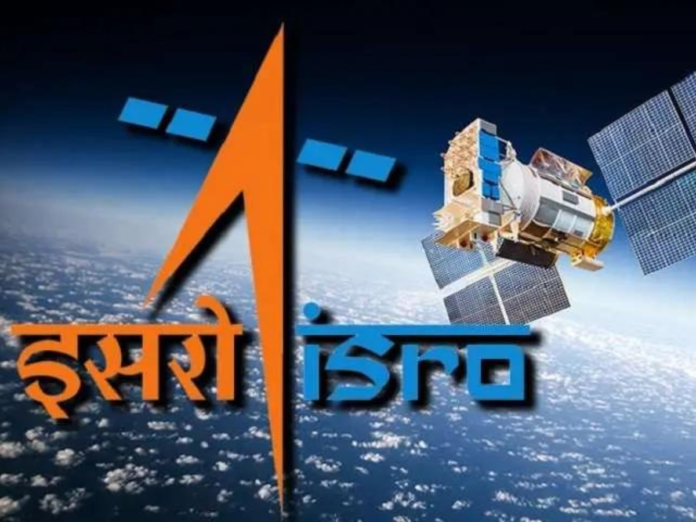ISRO operates under the Department of Space, Government of India. It consists of various centers, including the Indian Space Research Centre (ISRC), Satish Dhawan Space Centre (SDSC), and Vikram Sarabhai Space Centre (VSSC). These centers collaborate on research, development, and launch activities
Table of Contents
Introduction Of ISRO
The Indian Space Research Organization (ISRO) is India’s premier space agency, responsible for the country’s space exploration and satellite programs. Over the years, ISRO has made significant contributions to space research, satellite technology, and interplanetary missions. This article delves into the achievements, organizational structure, satellite technology, launch vehicles, international collaborations, future plans, and challenges faced by ISRO.
History of ISRO
The Indian Space Research Organization was established in 1969 with the vision to harness space technology for national development. It was formed by merging the Indian National Committee for Space Research (INCOSPAR) and the Indian Space Science and Technology Centre (ISSTC). Dr. Vikram Sarabhai, often regarded as the father of the Indian space program, played a crucial role in its inception.
Achievements of ISRO
Mars Orbiter Mission
In 2013, The Indian Space Research Organization launched the Mars Orbiter Mission, also known as Mangalyaan. It was India’s first interplanetary mission and successfully reached Mars orbit in 2014. This achievement made India the first country to reach Mars in its maiden attempt.
Chandrayaan Mission
ISRO’s Chandrayaan missions have focused on lunar exploration. Chandrayaan-1, launched in 2008, discovered water molecules on the Moon’s surface. Chandrayaan-2, launched in 2019, aimed to land a rover on the lunar surface but faced challenges during the landing phase.
GSLV Mk III Launch
ISRO’s Geosynchronous Satellite Launch Vehicle Mark III (GSLV Mk III) is a heavy-lift launch vehicle capable of placing satellites in geostationary orbits. Its successful launch in 2014 marked a significant milestone for ISRO’s launch capabilities.
Organizational Structure of ISRO
Indian Space Research Organization
The Indian Space Research Organization operates under the Department of Space, Government of India. It consists of various centers, including the Indian Space Research Centre (ISRC), Satish Dhawan Space Centre (SDSC), and Vikram Sarabhai Space Centre (VSSC). These centers collaborate on research, development, and launch activities.
Departments and Centers
The Indian Space Research Organization comprises several departments and centers, such as the Space Applications Centre (SAC), Physical Research Laboratory (PRL), and National Remote Sensing Centre (NRSC). Each center specializes in specific areas of space research and applications.
Satellite Technology and Applications
Remote Sensing Satellites
The Indian Space Research Organization has developed and launched numerous remote sensing satellites, such as the Resourcesat series, Cartosat series, and RISAT series. These satellites provide valuable data for applications like agriculture, disaster management, and environmental monitoring.
Communication Satellites
ISRO’s communication satellites, including the INSAT and GSAT series, facilitate various services like television broadcasting, telecommunication, and broadband connectivity across India.
Navigation Satellites
The Indian Regional Navigation Satellite System (IRNSS), popularly known as NavIC, is a network of navigation satellites developed by The Indian Space Research Organization . It provides precise positioning and timing services for both civilian and strategic applications.
Launch Vehicles of The Indian Space Research Organization
PSLV
The Polar Satellite Launch Vehicle (PSLV) is one of The Indian Space Research Organization’s most reliable and versatile launch vehicles. It has successfully launched numerous satellites into orbit, including Indian and foreign payloads.
GSLV
The Geosynchronous Satellite Launch Vehicle (GSLV) is designed to place satellites in geostationary orbits. It has played a crucial role in ISRO’s missions, including Chandrayaan and communication satellite launches.
SSLV
The Small Satellite Launch Vehicle (SSLV) is a new generation launch vehicle under development by ISRO. It aims to provide affordable launch options for small satellites.
International Collaborations
NASA-ISRO Synthetic Aperture Radar (NISAR)
The Indian Space Research Organization has collaborated with NASA for the joint development of the NISAR satellite. NISAR will provide valuable data on Earth’s surface deformation, ecosystem changes, and ice dynamics.
Indo-French Collaboration (Megha-Tropiques)
ISRO has also collaborated with the French space agency, Centre National d’Études Spatiales (CNES), for the Megha-Tropiques mission. This satellite is dedicated to studying tropical weather patterns and their impact on climate.
Future Plans and Missions
Gaganyaan – India’s Manned Space Mission
The Indian Space Research Organization is preparing for Gaganyaan, India’s first manned space mission. The mission aims to send Indian astronauts to Low Earth Orbit (LEO) and is scheduled for launch in the near future.
Aditya-L1 – India’s Solar Mission
Aditya-L1 is ISRO’s upcoming solar mission, focusing on studying the Sun and its impact on space weather. It will provide valuable insights into solar storms and their effects on Earth.
Challenges and Future Prospects
ISRO faces various challenges, including limited budgets, technological advancements, and competition from other space agencies. However, the organization continues to strive for excellence, exploring new frontiers and expanding India’s capabilities in space research.
Conclusion
The Indian Space Research Organization has made remarkable strides in space exploration, satellite technology, and interplanetary missions. Its achievements, including the Mars Orbiter Mission and Chandrayaan missions, have brought international recognition. With a robust organizational structure, cutting-edge satellite technology, and ambitious future plans, The Indian Space Research Organization remains at the forefront of space research and exploration.
FAQs
1. How does The Indian Space Research Organization compare to other space agencies?
The Indian Space Research Organization may have a smaller budget compared to some other space agencies, but it has showcased remarkable achievements in space exploration, especially considering cost-effectiveness.
2. What are the key applications of The Indian Space Research Organization ‘s remote sensing satellites?
ISRO’s remote sensing satellites are extensively used for applications such as agriculture, disaster management, and environmental monitoring.
3. When is the Gaganyaan mission scheduled for launch?
The Gaganyaan mission is scheduled for launch in the near future, although an exact date has not been announced yet.
4. How does The Indian Space Research Organization collaborate with international space agencies?
The Indian Space Research Organization collaborates with international space agencies on various missions and projects, such as the joint development of the NASA-The Indian Space Research Organization Synthetic Aperture Radar (NISAR).
5. What are the future prospects for The Indian Space Research Organization?
ISRO has ambitious plans for future missions, including Gaganyaan and Aditya-L1. These missions will further strengthen India’s capabilities in space research and exploration.
This article provides a comprehensive overview of the Indian Space Research Organization (ISRO). It covers the history, achievements, organizational structure, satellite technology, launch vehicles, international collaborations, future plans, and challenges faced by ISRO. Through its groundbreaking missions and technological advancements, ISRO continues to contribute significantly to India’s space program and the global scientific community.





